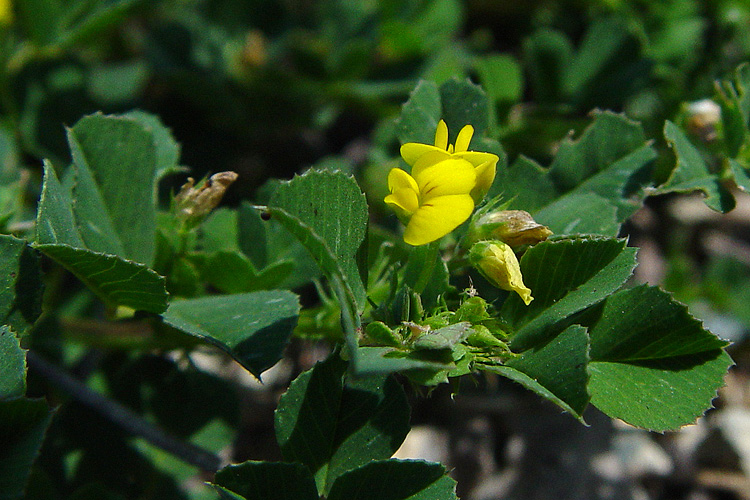Humans have, deliberately and accidentally, moved many species into habitats far from their original homes — and some of these introduced species become invasive, out-competing local species and causing trouble for whole biological communities. The process of introduction itself may select for more invasive versions of introduced species, and a recent paper by CSUN Biology Master’s graduate Carmen Hoffbeck and Associate Professor Casey terHorst examines the changes that may have helped one invasive wildflower put down roots in North America.
Burr medick (Medicago polymorpha) is a small, yellow wildflower related to alfalfa, which originated in the Mediterranean region — but it’s been transplanted around the world to be grown as a “cover crop” on fields between planting seasons, and it has escaped to establish invasive populations wherever it’s introduced. In Southern California, it’s commonly found growing as a weed in lawns. Hoffbeck and terHorst grew seeds sourced from burr medick populations in the natural Mediterranean range in the same greenhouse conditions as seeds from invasive populations in Africa, Asia, and the Americas to see whether invasive-range populations systematically differed from the plants that remained in their original habitat.
They found that, as a group, plants originating in the invasive range began flowering earlier and grew less total biomass, but produced more fruits and many more seeds than plants from the native range. This suggests, Hoffbeck and terHorst say, that the process of establishment in new habitats has selected for plants that start reproducing faster, and spend more energy on producing seeds at the expense of overall growth — which would tend to make them stronger competitors against the local plants they’d encounter in new habitats.
The full paper is available online at the journal website.
Image: Medicago polymorpha (Carol Witham, via CalPhotos)

